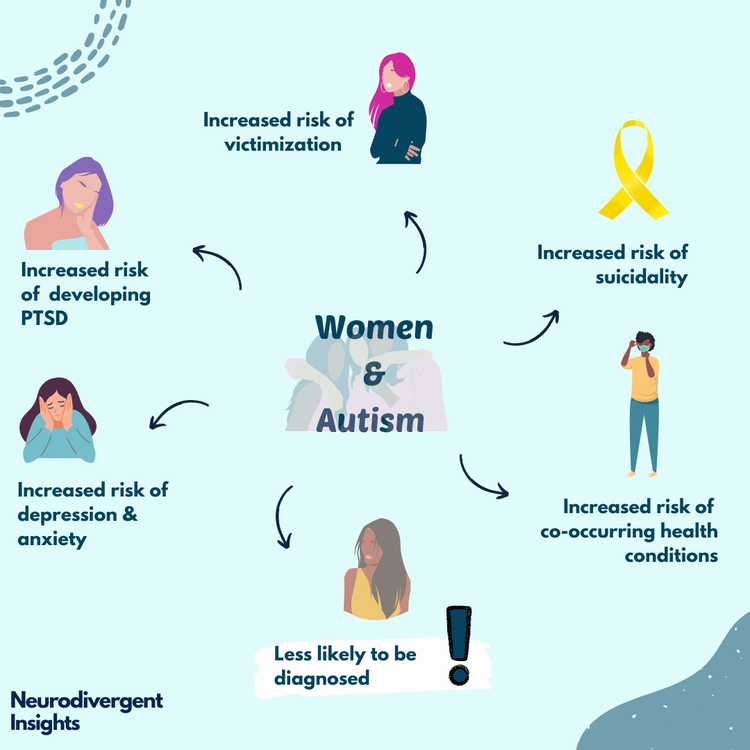Comprehending Autism: A Comprehensive Guide to Signs And Symptoms and signs
Autism Spectrum Disorder (ASD) encompasses a large range of attributes that can considerably influence an individual's social communications and daily performance. Recognizing the signs and signs, such as difficulties with eye contact, social communication troubles, and sensory sensitivities, is vital for early intervention. Recognizing these nuances not only help caretakers and educators in supplying appropriate support however additionally fosters a much more comprehensive setting for individuals with ASD. As we check out the intricacies of autism, it comes to be important to think about just how these signs manifest in different ways across the spectrum and what ramifications they hold for reliable treatment strategies.
Review of Autism Range Problem
Specifying Autism Range Condition (ASD) includes acknowledging it as a complicated neurodevelopmental condition defined by a variety of challenges in social interaction, communication, and behavior patterns. The term "range" shows the large variability in symptoms and their severity, which can differ dramatically from one person to an additional. ASD commonly shows up in very early youth, although some individuals may not receive a medical diagnosis till later in life.
Elements influencing the growth of ASD consist of ecological variables and hereditary predispositions, although the exact reasons continue to be under examination. Diagnosis frequently counts on behavioral analyses, as there are no clear-cut medical tests for ASD. Early treatment is vital and can considerably improve end results, concentrating on enhancing interaction abilities, social interactions, and flexible actions.
People with ASD may also show special strengths, such as remarkable focus to detail or specific locations of experience. Comprehending the multifaceted nature of ASD is necessary for cultivating an inclusive atmosphere that accommodates neurodiversity. Continued study is important for creating effective treatments and support systems, allowing people with ASD to thrive and meet their potential within society.
Usual Signs of Autism
Acknowledging the usual signs of Autism Spectrum Problem (ASD) is vital for early recognition and treatment. These signs can vary commonly in extent and presentation, however particular characteristics are frequently observed in individuals with ASD.
One of the most widespread indicators is a significant trouble in keeping and developing eye call. People might additionally display restricted rate of interest in social interactions and show a preference for solitary play.
Sensory level of sensitivities are also common; people might underreact or overreact to sensory stimuli, such as lights, structures, or noises. autism. Language advancement can be atypical, with some children showing postponed speech or utilizing language in unusual means, consisting of echolalia-- repeating phrases or sentences listened to somewhere else
It is vital to note that not every person with ASD will show all these signs, and the level of these behaviors can vary considerably. Early acknowledgment enables prompt support and sources, enhancing the top quality of life for those on the spectrum.
Social Interaction Difficulties
Social communication difficulties are a hallmark of Autism Spectrum Disorder (ASD), influencing an individual's capacity to involve effectively with others. These troubles can materialize in various means, including obstacles in initiating and keeping conversations, recognizing social hints, and responding properly in social interactions.
People with ASD may have problem with nonverbal communication, such as eye contact, here are the findings face expressions, and body language. This can bring about misunderstandings, as their communicative intent might not be correctly analyzed by others. Additionally, they might find it tough to comprehend the subtleties of tone and context, which are vital for effective communication.
In group settings, people with ASD might feel overwhelmed and might not recognize how to join in conversations (autism). They may additionally exhibit atypical conversational patterns, such as monologuing regarding details rate of interests without identifying social reciprocity
Furthermore, these difficulties can cause social seclusion or difficulties in forming connections, as peers may misunderstand their actions or interaction design. Recognizing these social communication challenges is vital for cultivating encouraging settings that advertise social abilities growth and boost the quality of interactions for individuals on the autism spectrum.
Sensory Reactions and sensitivities
Lots of individuals with Autism Range Condition (ASD) experience increased sensory level of sensitivities that can dramatically affect their daily lives. An individual with ASD may locate daily noises, such as a vacuum cleanser or crowded atmospheres, overwhelmingly traumatic, leading to stress and anxiety or meltdowns.
Sensory handling differences in individuals with ASD can additionally impact their ability to participate in regular activities and social communications. For example, a child that is sensitive to touch might resist physical love or prevent certain apparel materials. Additionally, a choice for sure appearances or tastes can limit nutritional choices and develop challenges throughout nourishments.
Understanding these sensory sensitivities is necessary for identifying the unique experiences of individuals with ASD. Awareness of their sensory profiles can promote far better interaction and assistance strategies, creating an atmosphere that fits their requirements and boosts their lifestyle. Inevitably, recognizing sensory level of sensitivities is a critical component of comprehending the broader range of autism.

Sustaining People With Autism
Effective support for people with Autism Range Disorder (ASD) is important for improving their overall health and fostering independence. Assistance approaches must be tailored to satisfy the unique demands of each individual, considering their strengths and challenges.

Social abilities training can additionally play an essential duty. autism. Engaging individuals in group activities or role-playing scenarios can improve their capability to browse social communications. Furthermore, it is vital to educate family members, caregivers, and peers about ASD to foster a inclusive and supportive community
Conclusion
In final thought, a detailed understanding of Autism Spectrum Condition is vital for acknowledging its symptoms and signs. Early identification of usual features, such as social interaction obstacles and sensory level of sensitivities, makes it possible for caretakers and teachers to implement reliable treatments. By promoting enhanced communication and social abilities, people with autism can navigate their environments more efficiently. Inevitably, boosted understanding and support can significantly boost the top quality of look at this site life for those redirected here impacted by ASD.
Autism Spectrum Problem (ASD) includes a broad range of features that can dramatically affect a person's social communications and daily performance.Individuals with ASD may have a hard time with nonverbal communication, such as eye call, facial expressions, and body language.Several individuals with Autism Range Disorder (ASD) experience increased sensory sensitivities that can substantially impact their day-to-day lives.Sensory processing distinctions in individuals with ASD can also impact their ability to involve in routine tasks and social communications.Comprehending these sensory level of sensitivities is vital for recognizing the special experiences of individuals with ASD.